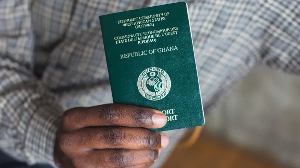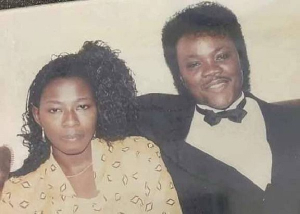After two narrow electoral misses, the Presidential Candidate of the New Patriotic Party, Nana Addo Dankwa Akufo-Addo, has got the wind in his sails ahead of November's elections.
Muhammadu’s Buhari's electoral victory in Nigeria last March against an incumbent president has fired up opposition hopes in Ghana, seeking to discount the age factor in electoral permutations.
On the face of it, a shrinking economy, a crippling power crisis and a string of corruption scandals will strongly favour the opposition in presidential and parliamentary elections due on November 7. In Ghana, though, the political calculus is not so simple.
The biggest campaign message for Nana Akufo-Addo and his campaign team will be anchored on inflated cost of infrastructure projects and soaring public debt with claims of little to show for those debts.
Stark reality
For the records, Ghana’s total public debt more than doubled to GH¢35.1 billion between 2010 and 2012, causing the public debt-GDP ratio to increase to 48.4 per cent and making the country to face a high risk of debt distress and increased overall debt vulnerability.
By end-2014, total public debt had risen to GH¢76.1 billion, equivalent to 67.1 per cent of GDP, and representing an increase of 116.8 per cent from 2012.
By June 2015, the total public debt stock had reached a high of GH¢96.9 billion, representing 72.7 per cent of GDP.
Ghana’s public debt stock thus increased by GH¢4.9 billion in 2006-2008, GH¢25.3 billion in 2009-2012, and GH¢61.8 billion in 2013-Junes 2015.
The provisional public debt stock as at September 2015 was GH¢92.2 billion, which was equivalent to 69.1 per cent of GDP.
This figure comprised GH¢54.5 billion external debt and GH¢37.7 billion domestic debt. This means that between 2007 and September 2015, the net increase in the public debt stock was GH¢87.3 billion.
According to the IFS, the stark reality of Ghana’s public debt situation is that the debt-GDP ratio has not only risen astronomically in the last few years, but has reached a level considered to be above the sustainability threshold. Assuming no roll-overs and refinancing of existing debt, about US$8.5 billion is the projected requirement to service the country’s external and domestic public debt in 2015.
In 2016-2020, a total of US$12.7 billion will be required to service the country’s debt and another US$7.7 billion in 2021-2025 to service debt.
It is projected that Ghana will need about US$21.2 billion to service its debt between 2015 and 2020.
Debt service absorbed 16.8 per cent of domestic revenue in 2008 (after debt forgiveness from the Multi-Lateral Debt Relief Initiative), rising sharply to 43.2 percent in 2012 and then to 78.8 per cent in 2014.
As a percentage of exports, however, total public debt experienced large swings over the period. It dropped from 153.2 per cent in 2008 to 120.1 per cent in 2011. Thereafter, the debt-exports ratio increased sharply to 173.1 percent in 2014.
The IMF Extended Credit Facility support-programme currently being implemented in the country aims to restore debt sustainability and macroeconomic stability to foster a return to high growth and job creation, while protecting social spending.
In light of this, the IMF has cautioned about the growing public debt and financing constraints in both the first and second reviews of the programme.
What to show for the debts
But the President’s supporters point to the increasing skyscrapers, modern architecture and glass buildings springing up everywhere in the capital city, Accra as the reasons for the rising public debts. A casual tour of the city centre and other suburbs reveals a fast developing city with massive cranes of all colours at various construction sites all over the city.
There is also the three-tier Kwame Nkrumah Circle interchange estimated at €74.88 million and expected to be completed this year, which is being funded by the governments of Ghana and Brazil, and being constructed by the Queiroz Galvao Construction Company.
While the Police Hospital and the Greater Accra Regional Hospital, popularly referred to as the Ridge Hospital, are still a beehive of activities which are geared at expanding and upgrading facilities to international standards, some roads have also seen a major facelift. The 37/Burma Camp to Trade Fair road seems to have taken inspiration from the N1 (George Walker Bush Highway).
Apart from providing an ultra-modern interchange in the city, an ambulance centre, fire station and police station would also be built under the interchange to cater for emergencies and criminal activities within the vicinity.
President Mahama boasts that apart from the interchange, which is expected to ease congestion in the area, government would also asphalt a total of 76 kilometers of roads in Accra.
He mentioned the rehabilitation of the Accra East roads, including 37 Military Hospital-Burma Camp-Labadi trunk road, Burma-Camp-Spintex road, Awoshie-Pokuase and Pig Farm roads as some of the beneficiaries of the project.
The Mahama humour
But President John Dramani Mahama has humour and the reason for his good humour is that his government has managed to steer its way through one of the worst years of economic crisis since the 1980s: worsening power cuts, devastating floods, inflation soaring to 17 per cent in June, ballooning foreign debt, and opposition claims of unprecedented political and business corruption.
Electoral register battle For now, the opposition parties' biggest battle is their campaign to get a new electoral register. They reckon the existing one is inflated by over a million names: the population is about 26 million and the median age is 18, meaning that if every eligible Ghanaian registered, there would be about 13 million names.
The governing NDC has dismissed the arguments saying it is too late and too costly to draw up a new register.
Politics of dumsor
Frequent power cuts in Ghana are gradually shelved to the back burner of opposition campaign slogan because the crisis is almost over. In the midst of the power crises, the government communicators set a benchmark, attributing the problem to an African one.
They argue that almost every African country has its power crisis. Lack of electricity from Angola to Zimbabwe holds back economic growth, education and health services.
In Ghana, the power crisis is at the centre of partisan politics, with opposition parties laying the blame for the failures on the door steps of government. Worse still for President John Dramani Mahama's government, aside the power shortages there are increasing torrent of other problems: rising inflation and interest rates, falling economic growth and a weakening currency together with the threat of deep cuts in public spending and job losses.
Opinions of Wednesday, 10 February 2016
Columnist: Suleiman Mustapha














